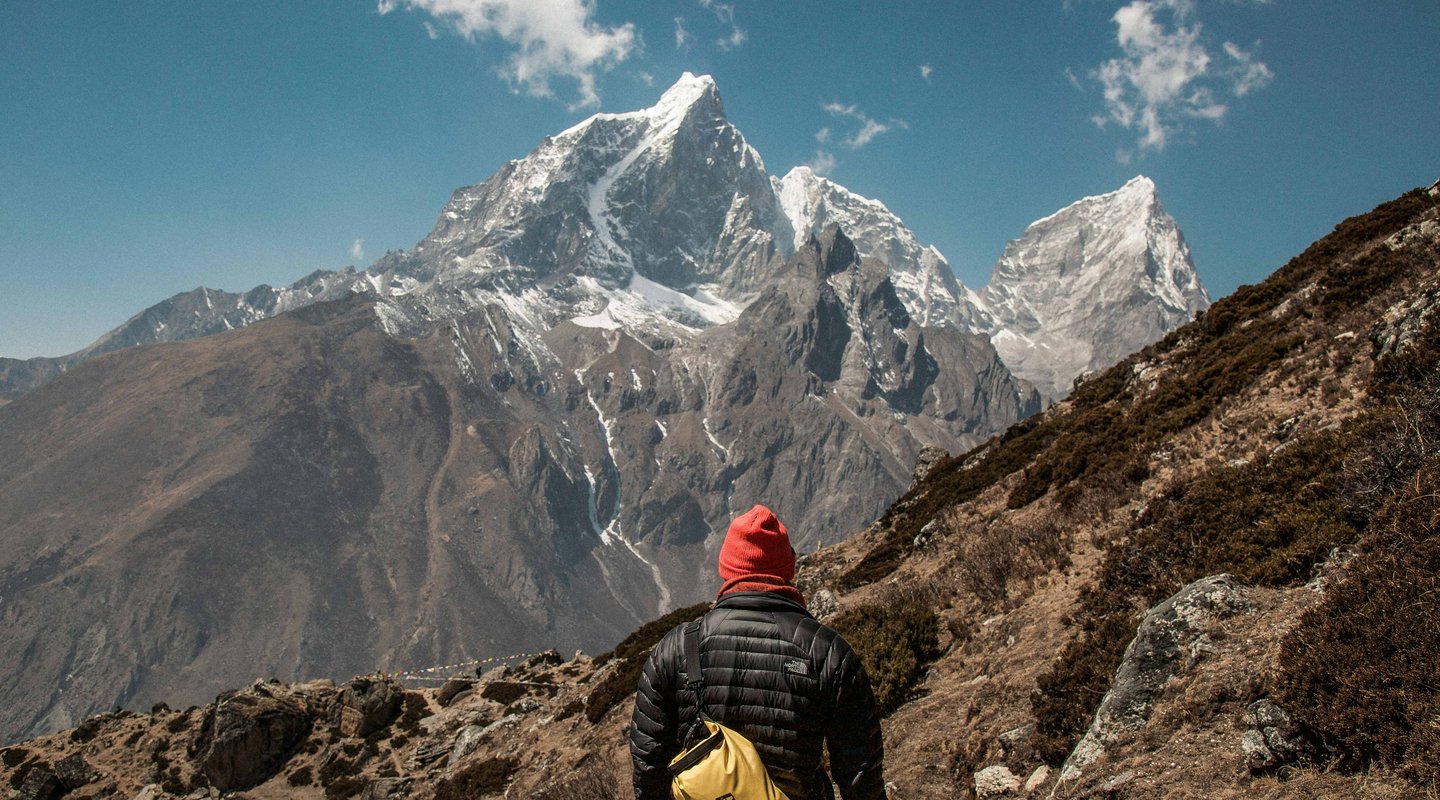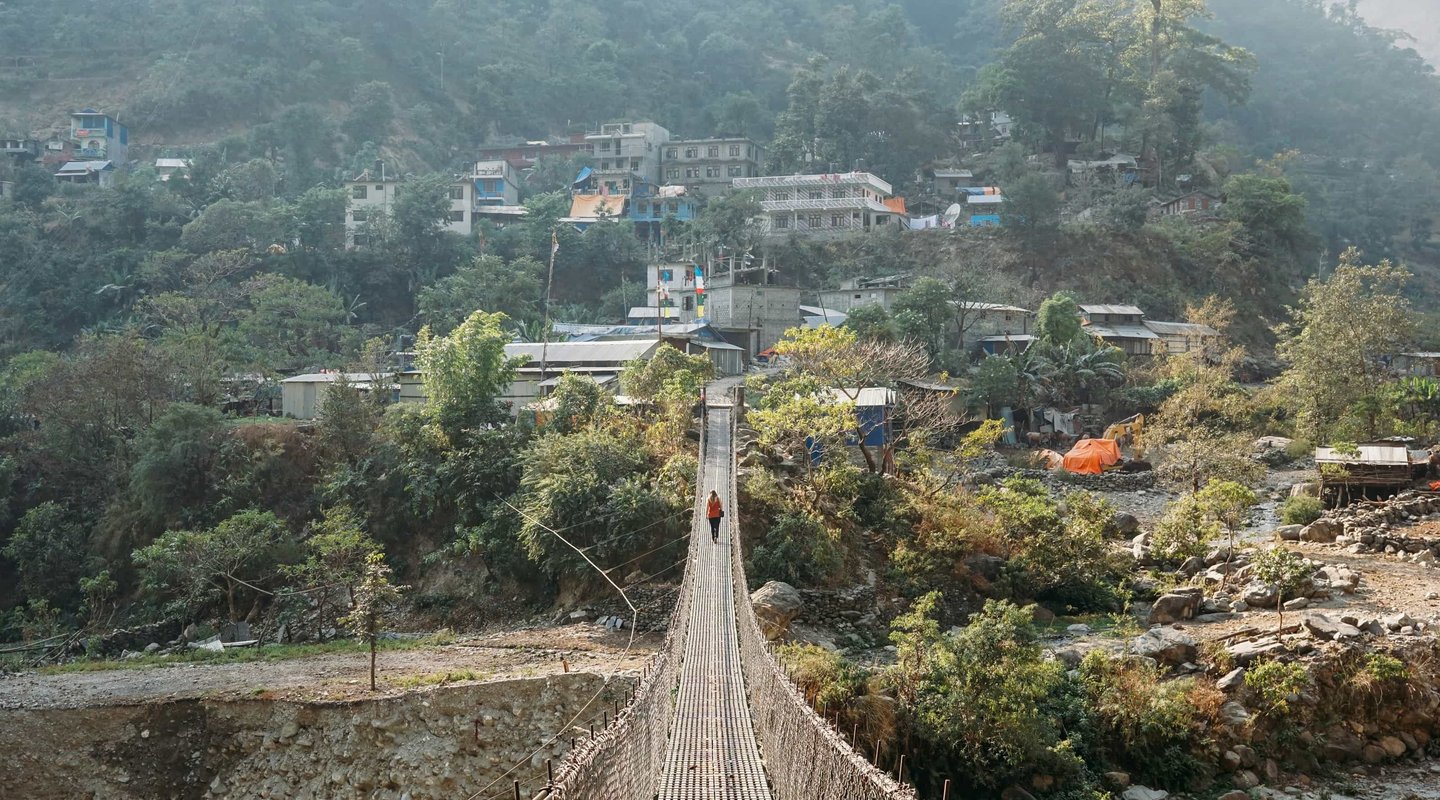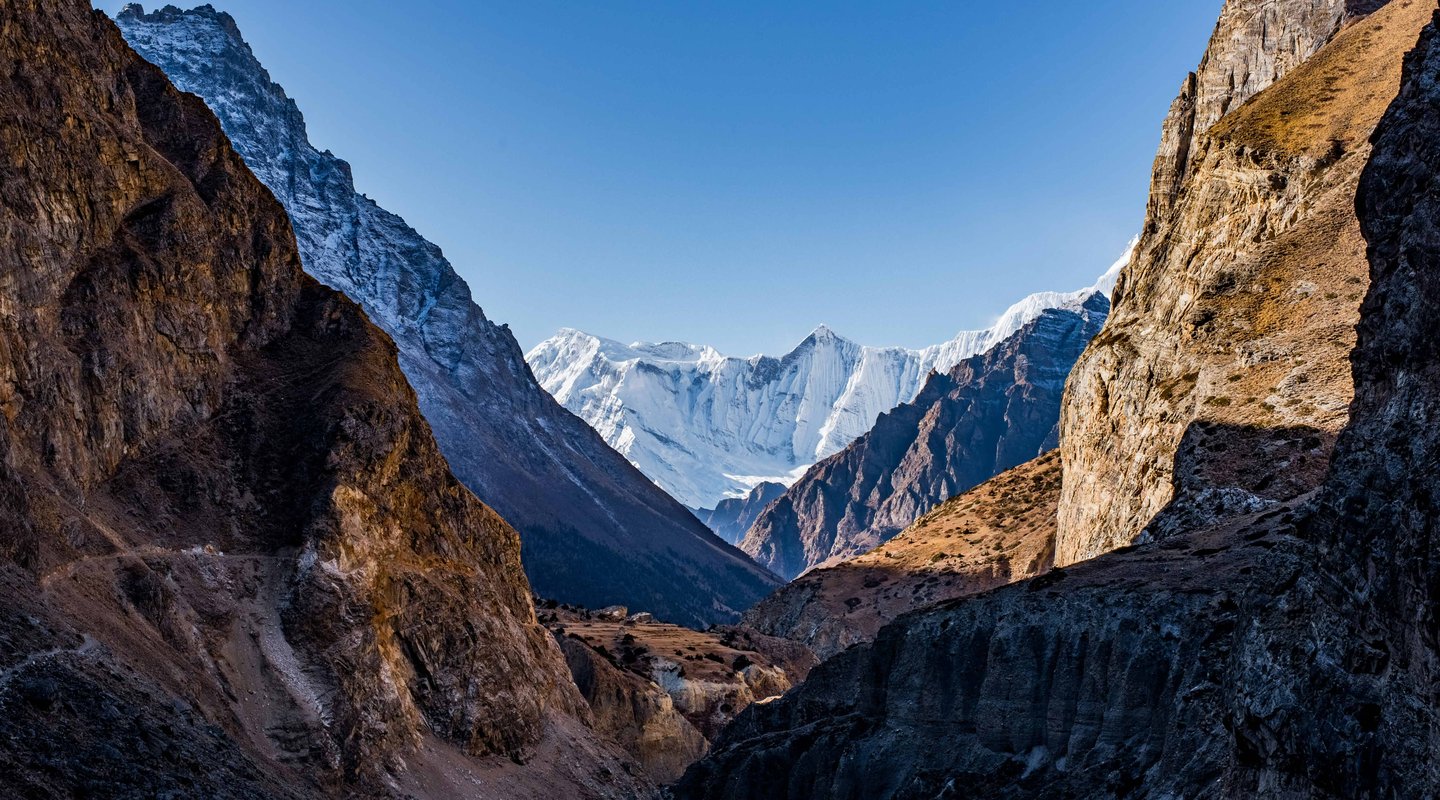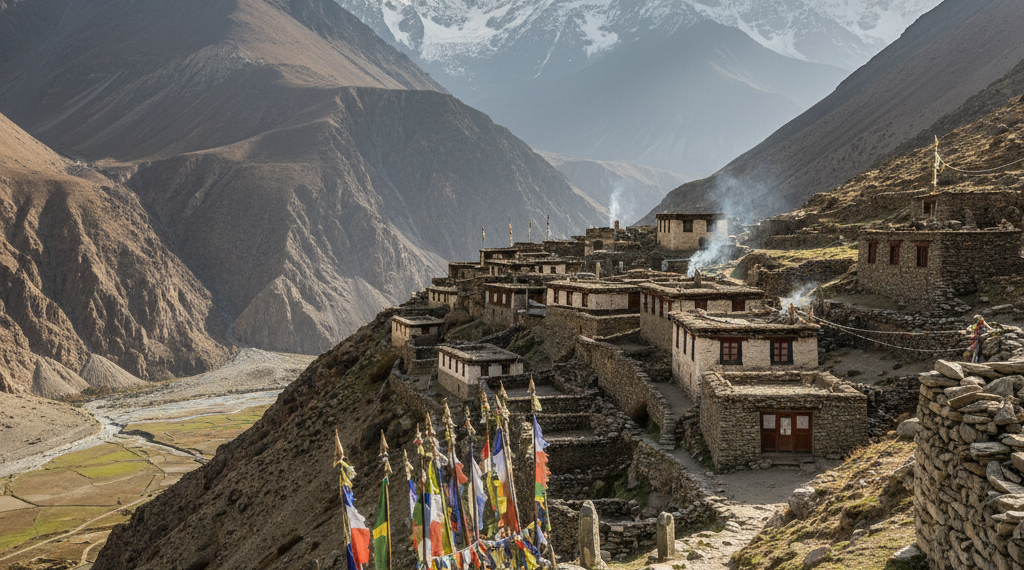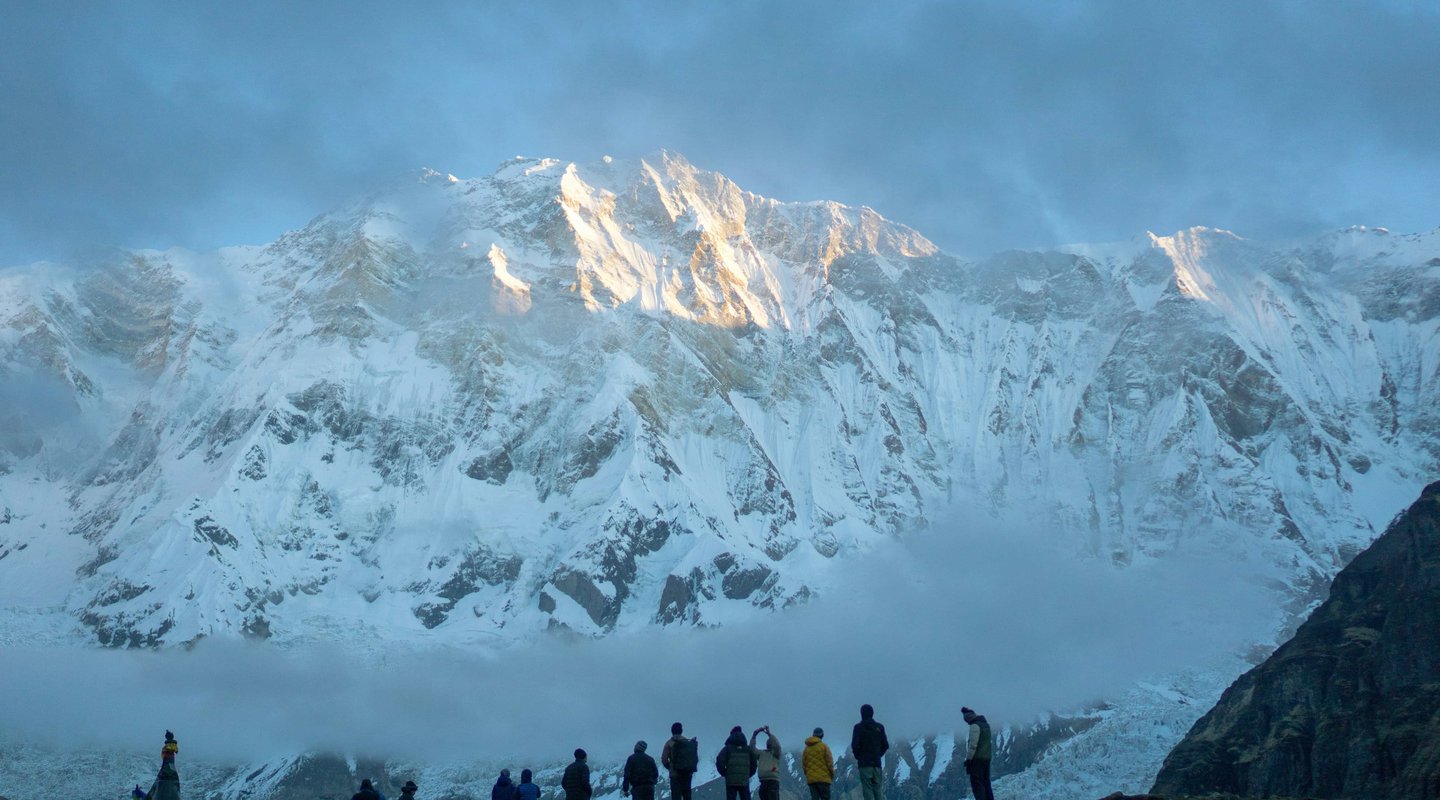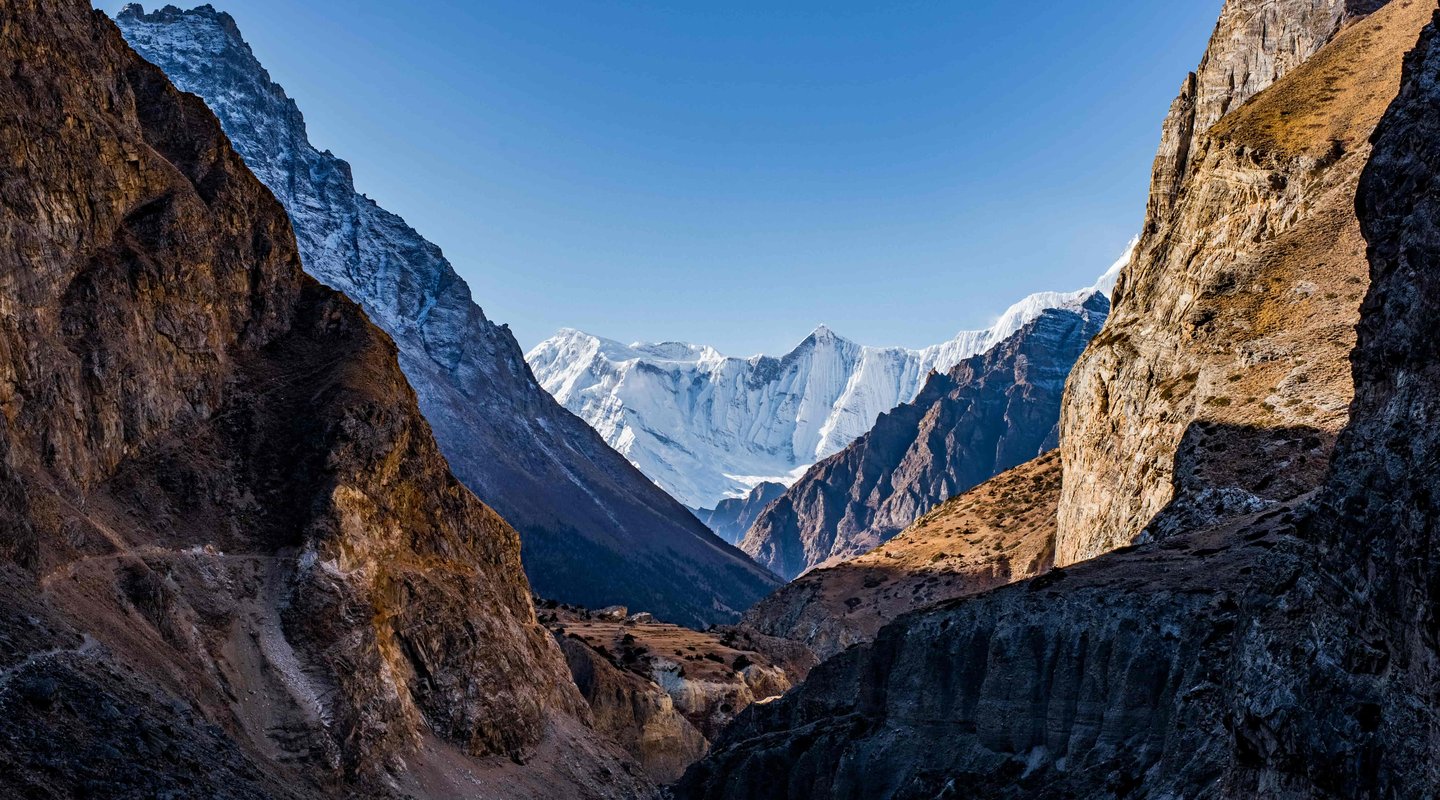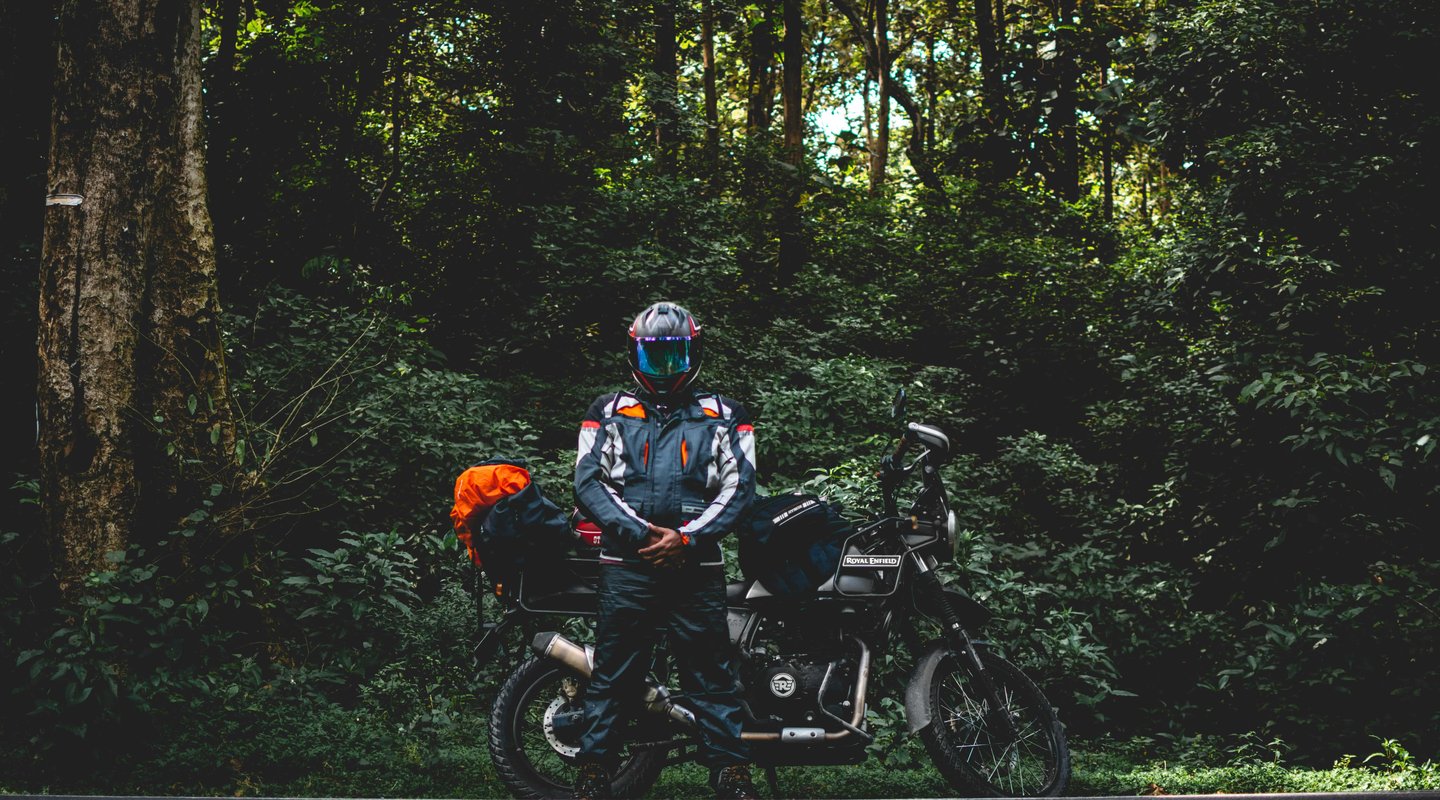The Everest Three Pass Trek combines Nepal's most spectacular high-altitude passes with iconic Everest Base Camp views, offering the ultimate Himalayan adventure. This comprehensive guide covers everything from day-by-day itineraries to costs, permits, and essential preparation for conquering Kongma La, Cho La, and Renjo La passes.
Overview of the Everest 3 Pass / Three Pass Trek
The Everest Three Passes Trek represents the pinnacle of trekking experiences in the Khumbu region. This challenging circuit connects three high-altitude passes above 5,300 meters while visiting Everest Base Camp and remote Sherpa valleys.
Unlike the standard EBC trek, the three pass trek in Nepal route offers unparalleled mountain panoramas from multiple vantage points. You'll witness Everest, Lhotse, Makalu, and Cho Oyu from angles most trekkers never experience.
The complete circuit typically requires 19-22 days, depending on acclimatization needs and weather conditions. This trek demands excellent fitness and proper altitude acclimatization but rewards adventurers with the most comprehensive Everest region experience available.
Detailed Day-by-Day Everest Three Pass Trek Itinerary
Complete 22-Day EBC 3 Pass Trek Itinerary
Day 1: Arrival in Kathmandu (1,400m)
- Airport transfer and trek briefing at hotel
- Gear check and last-minute shopping in Thamel
- Welcome dinner with traditional Nepali cuisine
Day 2: Fly Kathmandu to Lukla (2,840m), Trek to Phakding (2,610m)
- Early morning scenic flight (30 minutes) with Himalayan views
- Gentle 3-4 hour trek through Chaurikharka villages
- Distance: 8km, elevation gain minimal
Day 3: Phakding to Namche Bazaar (3,440m)
- Cross Hillary Suspension Bridge over Dudh Koshi river
- Enter Sagarmatha National Park at Monjo (permit check)
- Distance: 11km, 6-7 hours with steep final climb
Day 4: Acclimatization Day in Namche Bazaar
- Morning hike to Everest View Hotel (3,880m) for panoramic views
- Visit Sherpa Cultural Museum and weekly Saturday market
- Afternoon rest and hydration for altitude adjustment
Day 5: Namche to Tengboche (3,860m)
- Traverse along hillside with views of Everest and Ama Dablam
- Visit famous Tengboche Monastery (largest in Khumbu)
- Distance: 10km, 5-6 hours with gradual ascent
Day 6: Tengboche to Dingboche (4,410m)
- Descend through rhododendron forests to Imja Khola
- Gradual climb to Dingboche with stunning Lhotse wall views
- Distance: 11km, 5-6 hours walking
Day 7: Acclimatization Day in Dingboche
- Climb to Nagarjun Hill (5,100m) for acclimatization
- Spectacular views of Makalu, Lhotse, and Island Peak
- Return to Dingboche for rest and hydration
Day 8: Dingboche to Chhukung (4,730m)
- Short trek along Imja valley with glacier views
- Prepare for first pass crossing tomorrow
- Distance: 6km, 3-4 hours easy walking
Day 9: Cross Kongma La Pass (5,535m) to Lobuche (4,940m)
- Early start for challenging first pass crossing
- Technical sections with possible snow/ice conditions
- Distance: 10km, 8-10 hours including pass crossing
Day 10: Lobuche to Gorak Shep (5,170m), Everest Base Camp (5,364m)
- Morning trek to Gorak Shep through glacial moraine
- Afternoon hike to Everest Base Camp (3-4 hours return)
- Distance: 13km total, 7-8 hours walking
Day 11: Gorak Shep to Kala Patthar (5,545m), then Dzongla (4,830m)
- Pre-dawn climb to Kala Patthar for sunrise over Everest
- Descend via Lobuche to Dzongla for second pass preparation
- Distance: 11km, 7-8 hours total
Day 12: Cross Cho La Pass (5,420m) to Thagnak (4,700m)
- Technical glacier crossing requiring crampons (seasonal)
- Dramatic descent into Gokyo valley system
- Distance: 8km, 7-9 hours with pass crossing
Day 13: Thagnak to Gokyo (4,790m)
- Easy morning trek along Ngozumpa Glacier edge
- Arrive at beautiful Gokyo Lakes by afternoon
- Distance: 4km, 2-3 hours relaxed walking
Day 14: Gokyo Rest Day - Optional Gokyo Ri (5,357m)
- Optional sunrise climb to Gokyo Ri viewpoint
- Explore multiple turquoise Gokyo Lakes
- Rest and prepare for final pass crossing
Day 15: Cross Renjo La Pass (5,360m) to Lumde (4,380m)
- Final pass with incredible Everest massif views
- Long descent into Thame valley
- Distance: 15km, 8-9 hours total
Day 16: Lumde to Thame (3,820m)
- Descend through traditional Sherpa villages
- Visit Thame Monastery (birthplace of Tenzing Norgay)
- Distance: 6km, 3-4 hours easy descent
Day 17: Thame to Namche Bazaar (3,440m)
- Follow Bhote Koshi river valley route
- Return to civilization with hot showers and bakeries
- Distance: 14km, 5-6 hours mostly downhill
Day 18: Namche to Monjo (2,835m)
- Steep descent from Namche viewpoint
- Cross multiple suspension bridges
- Distance: 12km, 5-6 hours walking
Day 19: Monjo to Lukla (2,840m)
- Final trek day through familiar villages
- Celebration dinner with trekking crew
- Distance: 14km, 6-7 hours mixed terrain
Day 20: Lukla to Kathmandu
- Morning flight to Kathmandu (weather dependent)
- Transfer to hotel and free afternoon
- Optional sightseeing in Kathmandu valley
Day 21: Buffer Day / Kathmandu Exploration
- Buffer day for flight delays from Lukla
- Optional UNESCO World Heritage site tours
- Shopping for souvenirs in Thamel
Day 22: International Departure
- Airport transfer 3 hours before flight
- End of Everest three passes trek adventure
The Three High Passes: Kongma La, Cho La, and Renjo La
Kongma La Pass (5,535m) - The Technical Challenge
Kongma La stands as the highest and most technical of the three passes. The approach requires scrambling over rocky terrain and potentially using fixed ropes during icy conditions.
The pass offers breathtaking views of Lhotse, Nuptse, and Makalu from its summit. Most trekkers tackle this pass first when traveling clockwise, though it can be crossed from either direction.
Weather conditions significantly impact difficulty, with afternoon clouds and wind common. Starting before dawn ensures better visibility and safer crossing conditions.
Cho La Pass (5,420m) - The Glacier Crossing
Cho La Pass presents unique challenges with its glacier traverse requiring careful navigation. During winter and spring, crampons become essential for the icy sections near the pass summit.
The western approach from Dzongla involves steep switchbacks through loose scree. The eastern descent toward Thagnak features dramatic icefalls and requires careful foot placement on the glacier.
This pass connects the Everest Base Camp region with the Gokyo valley, offering stunning views of Ama Dablam and Cholatse. Morning crossings avoid afternoon snowfall common during monsoon and winter seasons.
Renjo La Pass (5,360m) - The Panoramic Viewpoint
Renjo La provides arguably the finest panoramic views of all three passes. The entire Everest massif spreads across the eastern horizon, with Gokyo Lakes shimmering below.
The western approach from Lumde involves a long, steady climb through yak pastures. The eastern ascent from Gokyo requires early starts to avoid afternoon weather deterioration.
This pass sees fewer trekkers than the other two, offering a more wilderness experience. The descent toward Thame valley reveals traditional Sherpa settlements rarely visited by mainstream trekkers.
Trek Difficulty, Altitude & Fitness Requirements
Physical Fitness Requirements
The Everest 3 pass trek difficulty ranks among Nepal's most challenging teahouse treks. Successful completion requires excellent cardiovascular fitness and mental determination.
Training should begin 3-4 months before departure, focusing on hiking with weighted backpacks. Include stair climbing, hill repeats, and long-distance walks building to 6-8 hour durations.
Previous high-altitude trekking experience proves valuable but isn't mandatory. Strong legs, good balance, and comfortable hiking 6-10 hours daily at altitude determine success more than technical climbing skills.
Altitude Considerations and Acclimatization
Proper acclimatization remains crucial for safety and enjoyment. The itinerary includes strategic rest days in Namche, Dingboche, and Gokyo to adjust to decreasing oxygen levels.
Altitude sickness in Everest region affects trekkers regardless of fitness level. Symptoms include headaches, nausea, and difficulty sleeping above 3,500 meters.
Following the golden rule of "climb high, sleep low" helps minimize risks. Staying hydrated (4-5 liters daily), avoiding alcohol, and ascending gradually reduce altitude-related problems significantly.
Technical Difficulty Assessment
While not requiring mountaineering experience, several sections demand sure-footedness and scrambling ability. Pass crossings involve loose rocks, steep gradients, and potential snow/ice conditions.
Using trekking poles provides stability on uneven terrain and reduces knee stress during descents. Basic crampon usage may be necessary during winter and early spring crossings.
Mental preparation for long days, basic accommodations, and weather challenges proves equally important. Maintaining positive attitudes during difficult sections helps overcome physical and environmental obstacles.
Best Season & Weather Conditions for Everest Three Passes Trek
Spring Season (March-May) - Peak Trekking Period
Spring offers stable weather and clear mountain views, making it the best time for Everest 3 pass trek. Rhododendrons bloom at lower elevations while snow remains on passes.
Temperatures range from 15°C in valleys to -15°C at pass crossings. Morning frosts give way to pleasant afternoon sunshine below 4,000 meters.
Crowds peak during April-May, requiring advance teahouse bookings. Flight delays from Kathmandu occur less frequently than autumn season.
Autumn Season (September-November) - Crystal Clear Views
Post-monsoon clarity provides exceptional mountain visibility during autumn months. Stable weather patterns and moderate temperatures create ideal trekking conditions.
October sees peak crowds similar to spring season. Early September and late November offer quieter trails with comparable weather conditions.
Colder temperatures arrive earlier at high altitudes compared to spring. Pass crossings may require crampons from late October onward.
Winter Season (December-February) - The Quiet Challenge
Winter trekking offers solitude and dramatic snow-covered landscapes. Clear skies provide excellent photography opportunities despite frigid temperatures.
Daytime temperatures range from 5°C to -20°C depending on altitude. Teahouses above 4,500m may close, requiring flexible itineraries.
Proper cold-weather gear becomes essential, including -20°C sleeping bags and insulated jackets. Some passes may become impassable after heavy snowfall.
Monsoon Season (June-August) - For Adventurous Souls
Monsoon brings daily afternoon rainfall below 3,500m but less precipitation at higher elevations. Dramatic cloud formations create unique photographic opportunities.
Leeches appear on lower trails while passes remain relatively dry. Lukla flights face frequent cancellations requiring flexible schedules.
Fewer trekkers mean peaceful trails and readily available accommodations. Experienced trekkers appreciate the solitude despite weather challenges.
Required Permits & Costs Breakdown
Essential Trekking Permits
Sagarmatha National Park Entry Permit
- Cost: NPR 3,000 (USD 30) for foreign nationals
- NPR 1,500 for SAARC nationals
- Obtained in Kathmandu or Monjo entrance gate
Khumbu Pasang Lhamu Rural Municipality Permit
- Cost: NPR 2,000 (USD 20) per person
- Required from 2018, obtained in Lukla
- Supports local area development projects
TIMS Card (Trekkers' Information Management System)
- No longer required for Everest region as of 2023
- Replaced by Khumbu Municipality permit system
- Keep passport copies for checkpoint registrations
Comprehensive Cost Breakdown (Per Person)
Budget Range: USD 2,000-4,500 total
Fixed Costs:
- International flights: $800-2,000 (varies by origin)
- Kathmandu-Lukla flights: $380-420 return
- Permits: $50 total
- Insurance with evacuation: $150-300
- Nepal visa: $50 (30 days)
Daily Costs on Trek:
- Accommodation: $5-10 per night (twin sharing)
- Meals: $25-35 per day (increasing with altitude)
- Hot showers: $4-5 per shower
- Charging devices: $2-5 per hour
- WiFi: $5-10 per day (unreliable above 4,000m)
Guide and Porter Costs:
- Licensed guide: $30-35 per day
- Porter (carries 20kg): $20-25 per day
- Tips: 10% of total guide/porter fees
- Insurance for staff: $30-40 per person
Equipment and Extras:
- Gear rental in Kathmandu: $200-300 total
- Sleeping bag rental: $1-2 per day
- Down jacket rental: $1-2 per day
- Snacks and drinks: $10-15 per day
- Emergency fund: $500 minimum
Essential Packing List for Everest 3 Passes Trek
Critical Gear Items
Footwear:
- Sturdy trekking boots (broken in)
- Camp shoes/sandals for teahouses
- Gaiters for snow crossings
- Crampon-compatible boots (winter/spring)
Sleeping System:
- Four-season sleeping bag (-15°C rated minimum)
- Sleeping bag liner for extra warmth
- Inflatable pillow (optional comfort)
Clothing Layers:
- Base layers (merino wool or synthetic)
- Insulating layer (fleece or down jacket)
- Waterproof shell jacket and pants
- Trekking pants (2-3 pairs)
- Down jacket for high altitudes
Technical Equipment
Navigation and Safety:
- Trekking poles (essential for passes)
- Headlamp with extra batteries
- Water purification tablets/filter
- First aid kit with altitude medication
- Sunglasses (Category 4 protection)
Optional Technical Gear:
- Crampons/microspikes (seasonal)
- GPS device or smartphone with maps
- Portable charger/solar panel
- Satellite communication device
Personal Items
Health and Hygiene:
- Sunscreen (SPF 50+) and lip balm
- Personal medications
- Toiletries and biodegradable soap
- Quick-dry towel
- Hand sanitizer and wet wipes
Documentation:
- Passport with visa
- Travel insurance documents
- Permit copies
- Emergency contact information
- Cash in small denominations
Accommodation, Food & Water on the Trek
Teahouse Accommodation Standards
Teahouses provide basic twin-sharing rooms with foam mattresses and pillows. Below 4,000m, some lodges offer attached bathrooms with hot showers.
Above 4,000m, expect shared squat toilets and basic washing facilities. Dining halls with wood stoves provide communal warmth during cold evenings.
Room quality decreases with altitude while prices increase. Booking through guides ensures room availability during peak seasons.
Food Options and Costs
Typical Teahouse Menu:
- Breakfast: Porridge, eggs, toast, pancakes ($5-8)
- Lunch: Noodle soup, fried rice, momos ($7-10)
- Dinner: Dal bhat, pasta, pizza, potatoes ($8-12)
- Drinks: Tea, coffee, hot chocolate ($2-5)
Dal bhat offers best value with unlimited refills providing necessary calories. Western food becomes expensive and less satisfying at altitude.
Carry energy bars, nuts, and chocolate for pass crossing days. Avoid meat above 3,500m due to storage concerns.
Water Sources and Purification
Bottled water costs $1-5 depending on altitude but creates plastic waste. Refilling bottles from taps and purifying saves money and environment.
Water purification options include tablets, SteriPEN UV light, or portable filters. Boiled water available at teahouses for $2-3 per liter.
Stay hydrated with 4-5 liters daily above 4,000m. Add electrolyte supplements to maintain mineral balance during strenuous days.
Guided vs Independent Trek: Pros and Cons
Benefits of Guided Trekking
Professional guides ensure safety through route knowledge and altitude sickness recognition. They handle permits, accommodations, and logistics, allowing focus on trekking enjoyment.
Cultural insights and language translation enhance experiences in remote villages. Emergency evacuation coordination becomes seamless with experienced guides familiar with procedures.
Group dynamics provide motivation during challenging sections. Porters carrying main luggage allow trekking with lighter daypacks, conserving energy for pass crossings.
Independent Trekking Considerations
Independent trekking offers complete flexibility with daily schedules and route choices. Costs reduce significantly without guide and porter fees.
Navigation requires careful map reading and GPS usage, especially during poor visibility. Accommodation availability becomes uncertain during peak seasons without advance bookings.
Emergency situations require self-reliance and evacuation arrangement abilities. Language barriers complicate interactions in remote settlements where English remains limited.
Making the Right Choice
First-time high-altitude trekkers benefit from guided support and safety networks. Experienced trekkers with navigation skills may prefer independent adventures.
Solo trekkers should consider joining groups for pass crossings for safety. Winter conditions strongly favor guided treks due to increased technical challenges.
Budget constraints shouldn't compromise safety - consider hiring guides for technical sections only. Local guides support community economies while providing valuable expertise.
Transportation Options: Getting to and from Lukla
Kathmandu to Lukla Flight Options
Regular flights operate from Kathmandu (30 minutes) with multiple daily departures. During peak season, flights divert through Manthali Airport (Ramechhap), requiring 4-hour pre-dawn drives.
Airlines include Tara Air, Summit Air, and Sita Air with similar safety records. Morning flights face fewer weather delays than afternoon departures.
Booking flexibility remains essential with 2-3 buffer days for weather delays. Fixed-wing aircraft carry 15-18 passengers with strict 15kg luggage limits.
Helicopter Alternatives
Helicopter charters cost $3,000-4,000 per flight (5 passengers maximum). Shared helicopter services reduce costs to $500-600 per person.
Helicopters fly in marginal weather conditions when planes remain grounded. Emergency medical evacuations utilize helicopter services exclusively.
Some operators offer helicopter returns from Everest Base Camp for time-constrained trekkers. Altitude restrictions limit passenger weights above 4,500m.
Overland Trekking from Jiri
Traditional approach follows Sir Edmund Hillary's 1953 route from Jiri. Additional 5-7 days reaches Lukla through authentic Sherpa villages.
Public buses to Jiri cost $10-15 with 8-hour journeys from Kathmandu. Private jeeps reduce travel time to 6 hours for $150-200.
This option eliminates flight uncertainty while providing superior acclimatization. Few trekkers choose this route, ensuring peaceful trails and cultural immersion.
Everest 3 Passes vs EBC Trek vs Gokyo Trek Comparison
Standard Everest Base Camp Trek
The classic EBC trek follows established routes with predictable daily stages. Completion requires 12-14 days with moderate fitness levels sufficient.
Highlights include Everest Base Camp and Kala Patthar viewpoint. Missing elements include remote valleys, challenging passes, and complete circuit satisfaction.
Crowds concentrate on main trails, especially during peak seasons. Suitable for first-time trekkers seeking iconic Everest experiences without technical challenges.
Gokyo Lakes Trek Alternative
Gokyo trek offers stunning turquoise lakes and Gokyo Ri viewpoint. Fewer crowds provide peaceful trekking through spectacular valleys.
The route requires 12-14 days with moderate difficulty levels. Cho La Pass addition creates mini-circuit combining Gokyo with EBC.
Missing elements include multiple pass crossings and complete Khumbu exploration. Ideal for trekkers seeking quieter alternatives to crowded EBC routes.
Three Passes Trek Superiority
The Everest 3 high passes trek encompasses all regional highlights comprehensively. Complete circuit satisfaction surpasses linear there-and-back routes significantly.
Multiple viewpoints provide varied Everest perspectives unavailable elsewhere. Remote valleys and challenging passes create ultimate adventure achievements.
Longer duration and increased difficulty filter crowds naturally. Perfect for experienced trekkers seeking comprehensive Khumbu region exploration.
Safety Considerations & Insurance Requirements
Comprehensive Travel Insurance
Insurance must explicitly cover trekking up to 6,000m altitude. Emergency helicopter evacuation coverage ($5,000 minimum) remains mandatory.
Verify coverage includes medical treatment, trip cancellation, and gear loss. Most policies exclude mountaineering but accept non-technical trekking.
Companies specializing in adventure travel provide appropriate coverage. Read policy exclusions carefully regarding pre-existing conditions and altitude limits.
Emergency Evacuation Procedures
Helicopter evacuation costs $5,000-10,000 depending on location and weather. Insurance companies require upfront payment with later reimbursement.
Communication devices (satellite phone/Garmin InReach) enable emergency coordination. Guide companies maintain evacuation protocols and hospital contacts.
Altitude sickness represents primary evacuation cause, emphasizing acclimatization importance. Travel companions should understand basic first aid and altitude sickness symptoms.
On-Trek Medical Facilities
Basic health posts exist in Namche, Pheriche, and Gokyo villages. HRA (Himalayan Rescue Association) clinics provide altitude sickness consultations.
Pharmacies stock basic medications but carry personal prescriptions. Dental and complex medical issues require Kathmandu evacuation.
Prevention through proper acclimatization, hygiene, and hydration reduces medical risks. Comprehensive first aid kits should include altitude medications (Diamox).
Budget Breakdown: Real Costs in Multiple Currencies
Total Trip Budget (22 Days, Per Person)
Budget Traveler: $2,000-2,500 / £1,600-2,000 / AUD 3,000-3,750 / NPR 260,000-325,000
- Independent trekking with basic accommodations
- Shared rooms and local food choices
- Minimal gear purchases, maximum rentals
- No helicopter backup options
Standard Comfort: $3,000-3,500 / £2,400-2,800 / AUD 4,500-5,250 / NPR 390,000-455,000
- Guided trek with porter support
- Private rooms where available
- Varied meal choices and occasional luxuries
- Proper gear and emergency funds
Premium Experience: $4,000-5,000 / £3,200-4,000 / AUD 6,000-7,500 / NPR 520,000-650,000
- Premium guide and full support team
- Best available accommodations
- Helicopter evacuation insurance
- High-quality gear and equipment
Daily Budget Breakdown
Accommodation: $5-10 increasing to $8-15 at altitude Meals: $25-35 per day total for three meals Water/Drinks: $10-15 including purification Miscellaneous: $10-20 for charging, WiFi, showers Total Daily: $50-80 depending on altitude and comfort
Porter and guide fees add $50-60 daily when hired. Tips traditionally equal 10% of total service fees.
Frequently Asked Questions (FAQs)
How difficult is the Everest 3 Pass Trek compared to EBC?
The three pass trek Nepal route significantly exceeds standard EBC difficulty. Technical pass crossings, longer duration, and higher maximum altitudes demand superior fitness and mountain experience.
What's the best season for Everest three passes trek?
Spring (March-May) and autumn (September-November) provide optimal conditions. October and April offer best weather stability with clear mountain views.
Can beginners attempt the Everest 3 pass trek?
Previous high-altitude trekking experience strongly recommended. Beginners should complete easier treks like Annapurna Circuit or standard EBC first.
How much does the complete Everest three pass trek cost?
Budget $2,000-4,500 per person including international flights. Daily on-trek expenses average $50-80 covering accommodation, food, and incidentals.
Is it possible to trek independently without guide?
Yes, experienced trekkers can complete independently. However, guides provide safety, navigation assistance, and valuable support during challenging sections.
What happens if I get altitude sickness?
Immediate descent remains the primary treatment. Prevention through proper acclimatization, hydration, and gradual ascent reduces risks significantly.
Do I need crampon experience for pass crossings?
Basic crampon usage helps during winter/spring but isn't mandatory. Guides provide instruction when conditions require crampon use.
How cold does it get on the passes?
Pass crossings experience -10°C to -20°C depending on season. Proper layering and quality sleeping bags rated to -15°C minimum prove essential.
Conclusion
The Everest 3 Pass trek itinerary delivers the ultimate Himalayan adventure, combining challenging high passes with comprehensive Khumbu exploration. While demanding excellent fitness and determination, proper preparation ensures successful completion of this remarkable journey.
Ready to conquer the Everest three passes? Contact our experienced team for personalized guided trek packages, ensuring your safety and maximizing your incredible Himalayan experience.
Take Action Today:

